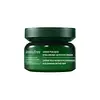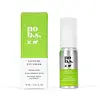What's inside
What's inside
 Key Ingredients
Key Ingredients

 Benefits
Benefits

 Concerns
Concerns

 Ingredients Side-by-side
Ingredients Side-by-side

Water
Skin ConditioningButylene Glycol
HumectantPropanediol
SolventGlycerin
HumectantDiisostearyl Malate
EmollientHydrogenated Poly(C6-14 Olefin)
EmollientCaprylic/Capric Triglyceride
MaskingPolyglyceryl-3 Methylglucose Distearate
EmulsifyingMethyl Trimethicone
Skin ConditioningPhytosteryl/Behenyl/Octyldodecyl Lauroyl Glutamate
Skin Conditioning1,2-Hexanediol
Skin ConditioningTrehalose
HumectantSqualane
EmollientPanthenol
Skin ConditioningGlyceryl Stearate Citrate
EmollientC14-22 Alcohols
Emulsion StabilisingAmmonium Acryloyldimethyltaurate/Vp Copolymer
Arachidyl Alcohol
EmollientHydroxypropyl Starch Phosphate
Polymethylsilsesquioxane
Behenyl Alcohol
EmollientC12-20 Alkyl Glucoside
EmulsifyingHydroxyethyl Acrylate/Sodium Acryloyldimethyl Taurate Copolymer
Emulsion StabilisingArachidyl Glucoside
EmulsifyingLactobacillus Ferment Lysate
Skin ConditioningGlyceryl Caprylate
EmollientParfum
MaskingEthylhexylglycerin
Skin ConditioningDisodium EDTA
Camellia Sinensis Seed Extract
HumectantCamellia Sinensis Leaf Extract
AntimicrobialSorbitan Isostearate
EmulsifyingCamellia Sinensis Seed Oil
HumectantLactic Acid
BufferingLinalool
PerfumingLimonene
PerfumingGlucose
HumectantCeramide NP
Skin ConditioningDextrin
AbsorbentTheobroma Cacao Extract
Skin ConditioningSodium Hyaluronate
HumectantHydrogenated Lecithin
EmulsifyingPhytosphingosine
Skin ConditioningHydrolyzed Hyaluronic Acid
HumectantTocopherol
AntioxidantSodium Hyaluronate Crosspolymer
HumectantHyaluronic Acid
HumectantSodium Acetylated Hyaluronate
HumectantWater, Butylene Glycol, Propanediol, Glycerin, Diisostearyl Malate, Hydrogenated Poly(C6-14 Olefin), Caprylic/Capric Triglyceride, Polyglyceryl-3 Methylglucose Distearate, Methyl Trimethicone, Phytosteryl/Behenyl/Octyldodecyl Lauroyl Glutamate, 1,2-Hexanediol, Trehalose, Squalane, Panthenol, Glyceryl Stearate Citrate, C14-22 Alcohols, Ammonium Acryloyldimethyltaurate/Vp Copolymer, Arachidyl Alcohol, Hydroxypropyl Starch Phosphate, Polymethylsilsesquioxane, Behenyl Alcohol, C12-20 Alkyl Glucoside, Hydroxyethyl Acrylate/Sodium Acryloyldimethyl Taurate Copolymer, Arachidyl Glucoside, Lactobacillus Ferment Lysate, Glyceryl Caprylate, Parfum, Ethylhexylglycerin, Disodium EDTA, Camellia Sinensis Seed Extract, Camellia Sinensis Leaf Extract, Sorbitan Isostearate, Camellia Sinensis Seed Oil, Lactic Acid, Linalool, Limonene, Glucose, Ceramide NP, Dextrin, Theobroma Cacao Extract, Sodium Hyaluronate, Hydrogenated Lecithin, Phytosphingosine, Hydrolyzed Hyaluronic Acid, Tocopherol, Sodium Hyaluronate Crosspolymer, Hyaluronic Acid, Sodium Acetylated Hyaluronate
Water
Skin ConditioningCarthamus Tinctorius Seed Oil
MaskingCyclopentasiloxane
EmollientCetearyl Alcohol
EmollientCaprylic/Capric Triglyceride
MaskingIsopropyl Myristate
EmollientPolysorbate 60
EmulsifyingDimethicone
EmollientSqualane
EmollientCaffeine
Skin ConditioningSodium Hyaluronate
HumectantCarnitine
CleansingRuscus Aculeatus Root Extract
AstringentChenopodium Quinoa Seed Extract
Skin ConditioningButylene Glycol
HumectantPhenoxyethanol
PreservativeEthylhexylglycerin
Skin ConditioningCitric Acid
BufferingPotassium Sorbate
PreservativeSodium Benzoate
MaskingWater, Carthamus Tinctorius Seed Oil, Cyclopentasiloxane, Cetearyl Alcohol, Caprylic/Capric Triglyceride, Isopropyl Myristate, Polysorbate 60, Dimethicone, Squalane, Caffeine, Sodium Hyaluronate, Carnitine, Ruscus Aculeatus Root Extract, Chenopodium Quinoa Seed Extract, Butylene Glycol, Phenoxyethanol, Ethylhexylglycerin, Citric Acid, Potassium Sorbate, Sodium Benzoate
 Reviews
Reviews

Ingredients Explained
These ingredients are found in both products.
Ingredients higher up in an ingredient list are typically present in a larger amount.
Butylene Glycol (or BG) is used within cosmetic products for a few different reasons:
Overall, Butylene Glycol is a safe and well-rounded ingredient that works well with other ingredients.
Though this ingredient works well with most skin types, some people with sensitive skin may experience a reaction such as allergic rashes, closed comedones, or itchiness.
Learn more about Butylene GlycolThis ingredient is an emollient, solvent, and texture enhancer. It is considered a skin-softener by helping the skin prevent moisture loss.
It helps thicken a product's formula and makes it easier to spread by dissolving clumping compounds.
Caprylic Triglyceride is made by combining glycerin with coconut oil, forming a clear liquid.
While there is an assumption Caprylic Triglyceride can clog pores due to it being derived from coconut oil, there is no research supporting this.
Learn more about Caprylic/Capric TriglycerideEthylhexylglycerin (we can't pronounce this either) is commonly used as a preservative and skin softener. It is derived from glyceryl.
You might see Ethylhexylglycerin often paired with other preservatives such as phenoxyethanol. Ethylhexylglycerin has been found to increase the effectiveness of these other preservatives.
Sodium Hyaluronate is hyaluronic acid's salt form. It is commonly derived from the sodium salt of hyaluronic acid.
Like hyaluronic acid, it is great at holding water and acts as a humectant. This makes it a great skin hydrating ingredient.
Sodium Hyaluronate is naturally occurring in our bodies and is mostly found in eye fluid and joints.
These are some other common types of Hyaluronic Acid:
Learn more about Sodium HyaluronateSqualane is an emollient that helps the skin hold onto moisture. It's an oily liquid that occurs naturally in certain types of fish and plant oils.
Because squalane boosts hydration in the skin, it also comes with plenty of benefits: it is an antioxidant and can help fight free radicals and skin damage. Squalane is also found to have a detoxifying effect when applied.
Squalane comes from squalene, which occurs naturally within the sebum of our skin. It is one of the oils our skin produces to keep itself hydrated. Squalane is the hydrogenated version of squalene and has a longer shelf life.
Research shows that squalane is non-irritating (even at 100% concentration).
In general, it's a fantastic ingredient. It does a great job at hydrating the skin, and it's suitable for those with sensitive skin.
The source of squalane may impact malassezia / fungal acne. This is because olive oil derived squalane can contain impurities such as fatty acids and plant waxes. Sugarcane derived squalane is recommended for anyone with malassezia concerns.
Is squalane vegan?
This depends on the source. Squalane can be derived from both plants and animals. Most squalane used in skincare comes from plants.
Please note: the source of squalane is only known if disclosed by the brand. We recommend reaching out to the brand if you have any questions about their squalane.
Read more about squalene with an "e".
Is squalane an oil?
Squalane is often called an oil, but it’s technically not; it’s a hydrocarbon, meaning it’s only made of carbon and hydrogen, unlike true oils which are triglycerides made of fatty acids and glycerol.
The term “oil-free” isn’t regulated, so companies can define it however they want. Some exclude all oils, while others just avoid mineral oil or comedogenic oils.
While some people avoid oils thinking they cause breakouts, the right kind of oil (or oil-like ingredient like squalane) can actually help balance and hydrate your skin. It’s worth testing out simple oils or squalane to see what works best for your skin.
Learn more about SqualaneWater. It's the most common cosmetic ingredient of all. You'll usually see it at the top of ingredient lists, meaning that it makes up the largest part of the product.
So why is it so popular? Water most often acts as a solvent - this means that it helps dissolve other ingredients into the formulation.
You'll also recognize water as that liquid we all need to stay alive. If you see this, drink a glass of water. Stay hydrated!
Learn more about Water